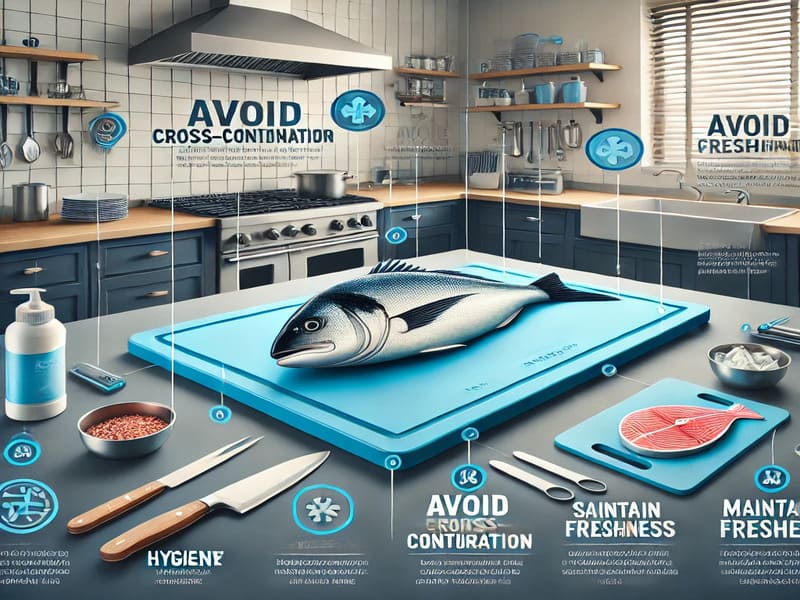
Chamberlains of London – Raw seafood dishes, such as sashimi, ceviche, or other seafood delicacies, are becoming increasingly popular worldwide. These dishes offer fresh flavors and high nutritional benefits. However, preparing raw seafood requires extra attention to hygiene to avoid contamination risks. One simple yet essential step is using a blue cutting board specifically for the food preparation process.
When preparing raw seafood, hygiene is a crucial factor that must not be overlooked. Raw seafood, which is not cooked, is susceptible to bacterial contamination if not handled properly. Cross-contamination can occur when the same kitchen tools are used for various food types, such as meat, poultry, and vegetables, without being cleaned thoroughly.
Raw seafood must be handled carefully to ensure it is safe to consume. One of the best ways to achieve this is by using dedicated tools. A blue cutting board has become a standard in professional kitchens and is now increasingly adopted in household kitchens to improve hygiene.
Using a blue cutting board has become a standard procedure in professional kitchens. The blue color helps easily identify tools specifically for seafood. This minimizes the risk of cross-contamination with other food ingredients. Additionally, the blue cutting board serves as a visual marker to maintain kitchen cleanliness and organization.
Blue cutting boards are often made of high-quality materials that resist stains and fishy odors. This is important because lingering odors on the cutting board can affect the taste and aroma of other foods. By using the right cutting board, you not only maintain cleanliness but also ensure the optimal flavor of raw seafood.
“Also Read: Creamy Seafood Soup: A Luxurious Dish, Easily Made at Home”
In addition to using a blue cutting board, here are some important steps to follow when handling raw seafood:
Raw seafood offers numerous nutritional benefits that should not be overlooked. Omega-3 fatty acids found in fish, for example, are excellent for heart and brain health. Additionally, consuming raw seafood allows you to get vitamins and minerals in their most intact form since they are not exposed to heat during cooking.
However, these benefits can only be enjoyed if the seafood is prepared correctly. Maintaining hygiene during the preparation process is the key to ensuring raw seafood is both safe and delicious to eat.
To ensure the quality and safety of raw seafood, proper storage is key. Always keep raw seafood refrigerated or on ice, ideally below 4°C. Make sure to store it separately from other foods to prevent cross-contamination. Use airtight containers or food-safe wraps to maintain freshness and avoid the spread of odors.
Contamination in raw seafood dishes can lead to various health problems, including food poisoning. Bacteria such as Salmonella and Vibrio can thrive if seafood is not handled properly. Therefore, hygienic practices such as using a blue cutting board, cleaning tools properly, and storing seafood at the right temperature are essential.